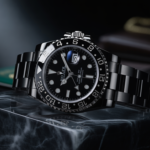When it comes to luxury timepieces, Switzerland stands at the pinnacle of precision, craftsmanship, and heritage. Among its renowned watchmaking houses, two names consistently rise to the surface: Longines and Tissot. Both brands have rich histories, global recognition, and dedicated followings — yet each offers a distinct identity that appeals to different types of watch enthusiasts.
In the world of horology, the debate of Longines vs Tissot is not simply about which brand is “better.” Rather, it’s about understanding their philosophies, craftsmanship, value propositions, and what each brings to the wrist of a discerning wearer. Let’s dive into this detailed comparison of two of Switzerland’s most iconic watch brands.
A Brief History of Longines
Founded in 1832 in Saint-Imier, Switzerland, Longines has long been associated with elegance, innovation, and sporting excellence. The brand’s signature winged hourglass logo — one of the oldest registered trademarks in watchmaking — symbolizes a commitment to timeless sophistication and technical precision.
Longines built its reputation through early innovations in chronographs and aviation watches. By the early 20th century, the company was already producing precision instruments for sports and navigation. Their watches have served as official timekeepers for the Olympics and equestrian events, cementing their legacy in the world of sports timing.
Over time, Longines has maintained a consistent design philosophy centered on refined aesthetics and mechanical excellence. Their watches often blend classic elegance with contemporary engineering, making them favorites among professionals and collectors alike.
A Brief History of Tissot
Tissot, founded in 1853 in Le Locle, Switzerland, has built its name on innovation, accessibility, and modern flair. From introducing the first mass-produced pocket watch with two time zones to pioneering the use of unconventional materials like wood, stone, and plastic in watchmaking, Tissot has consistently pushed boundaries.
Unlike many traditional Swiss luxury brands, Tissot has always aimed to balance affordability with quality. As part of the Swatch Group — the same parent company that owns Longines, Omega, and Breguet — Tissot benefits from shared Swiss technology and resources while catering to a broader audience.
Tissot’s diverse range includes everything from sporty chronographs to classic dress watches, offering stylish options for both entry-level collectors and seasoned enthusiasts.
Design Philosophy: Heritage Meets Modernity
The difference between Longines vs Tissot becomes apparent when examining their design philosophies.
Longines leans toward elegance and timelessness. Its watches are designed for those who appreciate vintage charm, clean dials, and refined detailing. Collections like the Longines Master, Conquest, and Heritage lines reflect the brand’s focus on traditional watchmaking aesthetics.
Tissot, on the other hand, embraces versatility and innovation. While it produces elegant dress watches like the Le Locle and Gentleman collections, it also offers bold, modern designs such as the T-Touch series — one of the first touch-screen watches in the world. Tissot watches often feature contemporary materials and sporty styling that appeal to a younger demographic.
In essence, Longines is about classic sophistication, while Tissot represents modern versatility.
Craftsmanship and Movement Quality
Both brands manufacture Swiss-made watches, ensuring excellent quality and precision. However, their approach to craftsmanship varies.
Longines typically offers higher-end finishing and movements compared to Tissot. Many Longines watches feature modified ETA movements with proprietary calibrations exclusive to the brand. These are often enhanced for better accuracy and longer power reserves. Longines also tends to use sapphire crystal glass and high-grade stainless steel across all collections, adding to their luxurious feel.
Tissot, while also using ETA movements (since ETA is part of the Swatch Group), focuses on delivering solid performance at an accessible price. Their Powermatic 80 movement, for instance, offers an impressive 80-hour power reserve — a remarkable feature for its price range.
In short, Longines focuses more on prestige and refinement, while Tissot provides outstanding value for money and innovation.
Price Comparison
When comparing Longines vs Tissot, pricing is one of the key differentiators.
- Tissot typically ranges between $300 to $1,200 USD, catering to the mid-range segment.
- Longines, by contrast, starts around $1,000 USD and can go up to $5,000+ USD depending on the model and complication.
Both brands deliver excellent quality for their respective price points, but Longines positions itself as a more premium option. If you’re looking for a daily luxury watch without overspending, Tissot is a fantastic choice. If you desire a more elevated, heirloom-level timepiece, Longines offers that extra touch of class.
Brand Prestige and Market Perception
Prestige plays a big role in how these two brands are perceived.
Longines is widely regarded as a luxury brand, often competing with Omega and TAG Heuer in terms of heritage and brand image. Its association with equestrian sports, aviation, and classical elegance enhances its prestige among collectors.
Tissot, on the other hand, is viewed as a gateway to Swiss luxury — offering the quality and tradition of Swiss craftsmanship at a more attainable price. It’s perfect for those beginning their journey into high-end horology.
Both brands carry significant respect, but Longines enjoys a more elevated status in the luxury hierarchy due to its historical significance and higher-end models.
Innovation and Technology
When it comes to innovation, Tissot shines for its forward-thinking approach. The brand’s T-Touch line, featuring touch-screen functionality, altimeters, barometers, and compasses, was revolutionary. Its commitment to modern features makes Tissot a leader in blending technology with traditional craftsmanship.
Longines, while more conservative in its innovation, focuses on mechanical advancements and timeless aesthetics. Its new models emphasize improved automatic calibers and heritage-inspired designs, appealing to purists who value classic watchmaking.
So, if you prioritize smart functionality and contemporary design, Tissot may win your heart. But if you lean toward traditional horology and refined craftsmanship, Longines remains the clear choice.
One Essential Accessory for Every Watch Owner: The Best Watch Winder
Whether you own a Longines or a Tissot automatic watch, one accessory can make your life easier — the best watch winder. Automatic watches rely on motion to keep running. When not worn for a few days, they can stop, requiring you to reset the time and date.
A best watch winder eliminates this problem by gently rotating your timepiece when it’s not on your wrist. This keeps the movement’s lubricants evenly distributed and ensures your watch remains ready to wear at any moment. Modern watch winders come in sleek designs, often with adjustable rotation settings and silent motors.
For anyone building a watch collection — especially with automatic models from Longines or Tissot — a high-quality winder isn’t just a luxury; it’s a necessity. It preserves accuracy, reduces wear from manual winding, and elegantly displays your prized timepieces.
Longines vs Tissot: Which One Should You Choose?
The choice ultimately depends on your personal style, budget, and what you value most in a timepiece.
- Choose Longines if you desire classic luxury, refined design, and higher-end craftsmanship. It’s perfect for formal occasions or collectors seeking an elegant statement piece.
- Choose Tissot if you prefer innovation, versatility, and affordability without compromising on Swiss quality. It’s ideal for daily wear and those entering the world of Swiss horology.
Both brands offer reliability, heritage, and style — you simply can’t go wrong with either.
Final Thoughts
The Longines vs Tissot debate is less about rivalry and more about appreciation. Both brands represent the finest traditions of Swiss watchmaking, yet they cater to slightly different audiences.
Longines embodies timeless elegance — watches that echo sophistication and heritage. Tissot reflects modern adaptability — a celebration of innovation and accessible luxury. Together, they prove that the Swiss watch industry continues to blend art, science, and emotion in every tick.
Whichever brand you choose, pairing it with the best watch winder ensures your treasured timepiece remains as accurate and alive as the day you bought it. After all, in the art of keeping time, every detail counts.

















